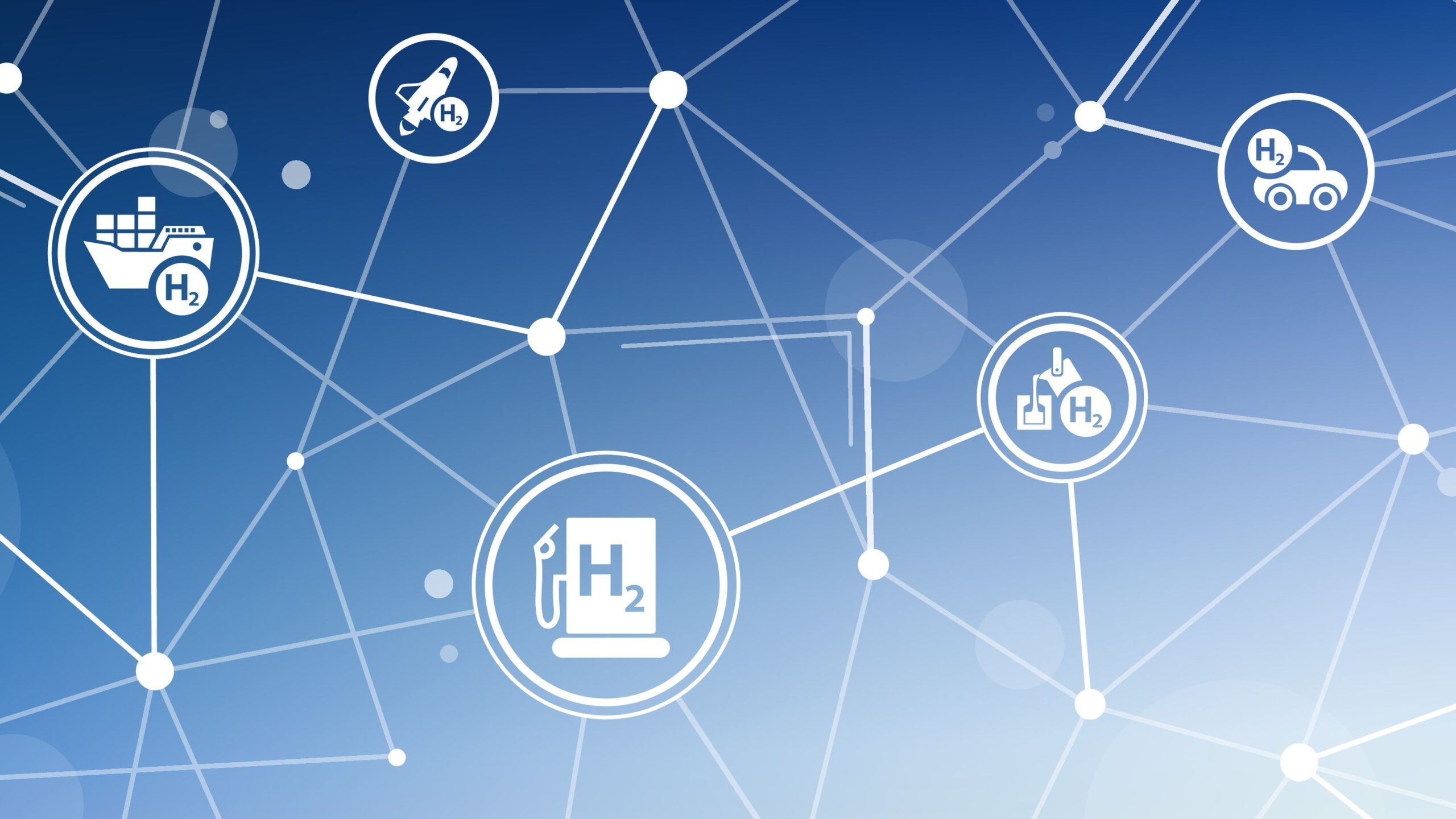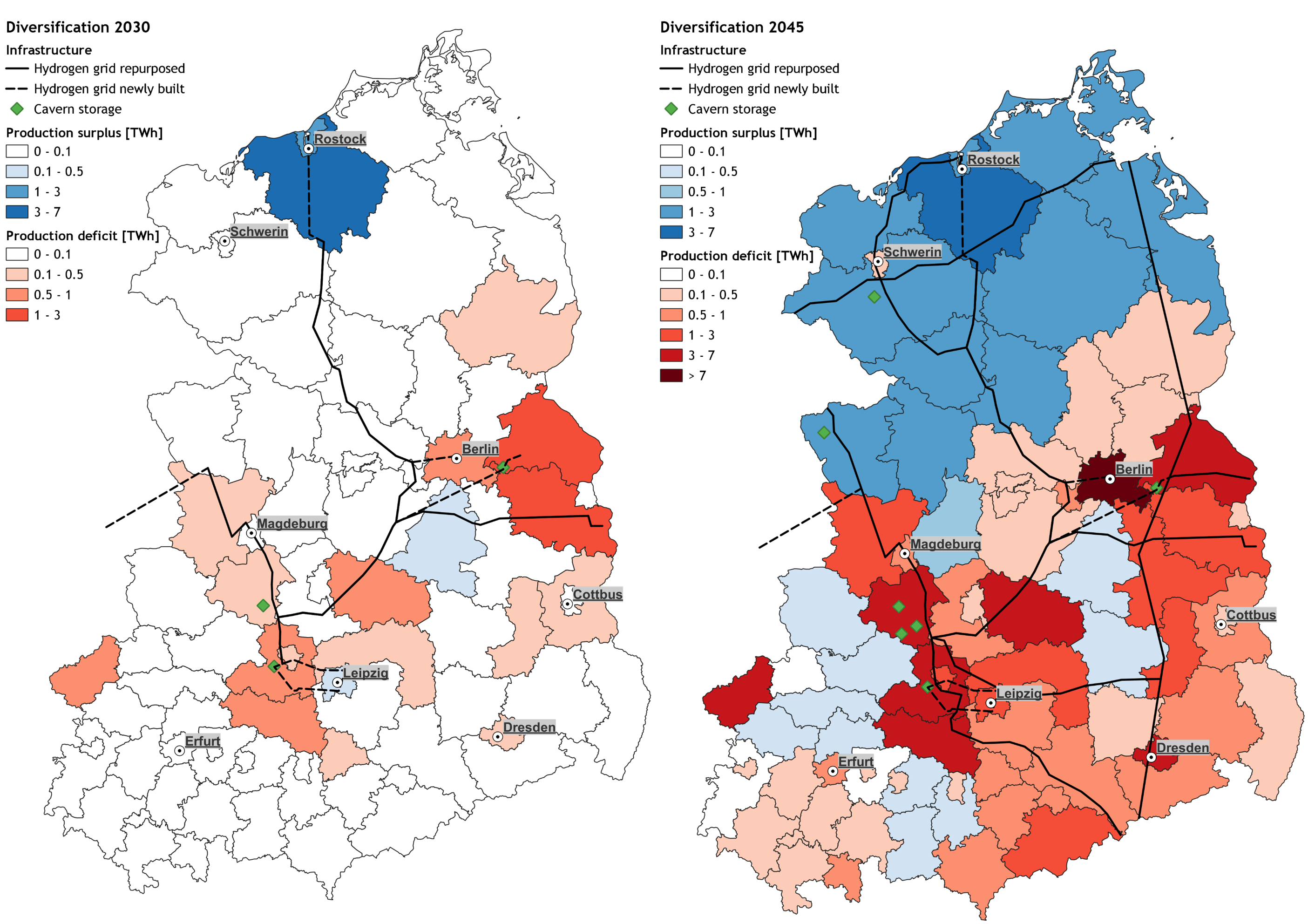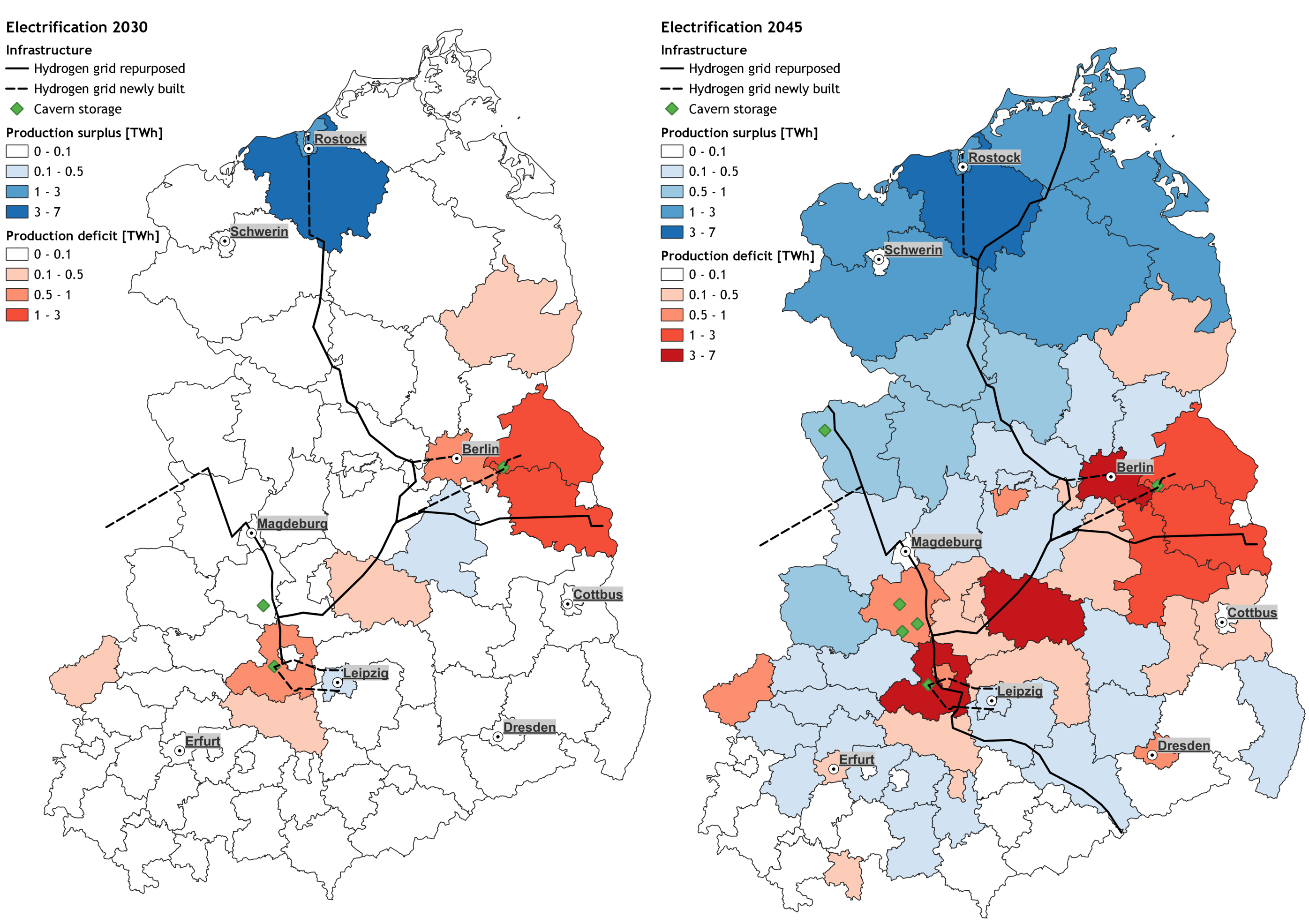
Eastern Germany is suitable for a future hydrogen economy: concentrated demand in industrial and urban centers, production in proximity to the coast and extensive transport capacities of import and transit pipelines from and to neighboring regions. Depending on the development of hydrogen demand in the individual sectors, Eastern Germany could have an annual hydrogen deficit of 54 TWh in 2045.
In addition, up to 48 TWh of transit demand could have to be transported to neighboring regions via transport pipelines. This would require extensive conversions from natural gas to hydrogen pipelines and the construction of new pipelines by 2045. These are the main findings of the EWI study „Development of a Hydrogen Market in Eastern Germany until 2045 – An infrastructure analysis based on regional potentials and demand“, commissioned by GASCADE Gastransport GmbH.

The EWI team examines two scenarios for the development of hydrogen demand and supply in Eastern Germany. The “diversification” scenario assumes a greater substitution of fossil fuels by hydrogen, while the “electrification” scenario assumes a predominant electrification of energy consumption. The resulting hydrogen balances, together with analyses of potential import and export demands in Eastern Germany, provide an indicative view on future pipeline-based transport demand.
A high penetration of electricity applications shows only a hydrogen deficit of 2 TWh in 2045. Hydrogen transits are also barely necessary, which results in a significantly smaller scale of the indicative hydrogen grid in Figure 2 compared to the “diversification” scenario in Figure 1.

However, both scenarios show hydrogen production to be concentrated in coastal regions and demand to occur mainly in industrial centers and metropolitan areas. “In Eastern Germany, a north-south imbalance in hydrogen demand is likely to emerge,” says Dr. Eren Çam, Manager and Head of Energy Commodities at EWI, who conducted the study together with Jan Kopp, David Schlund and Philipp Theile. “The regional differences and the increasing potential of hydrogen transits through Eastern Germany could become crucial drivers of the growing hydrogen infrastructure”.
In addition to the electricity-based production of hydrogen, production technologies such as the reforming of natural gas or methane pyrolysis with subsequent capture of carbon dioxide emissions could offer climate-neutral alternatives with large production potentials in Eastern Germany. As a result, the region could become a net exporter of hydrogen already in 2030 and could achieve a production potential of up to 366 TWh in 2045 on the Eastern German coast. For the transmission of the production quantities, further pipelines would have to be converted, compared to the “diversification” scenario.
Furthermore, the electricity-independent production technologies could contribute to the security of supply, as they would also provide guaranteed capacities in hydrogen supply during peak load situations. They also could represent a cost-efficient alternative to imports of green hydrogen.